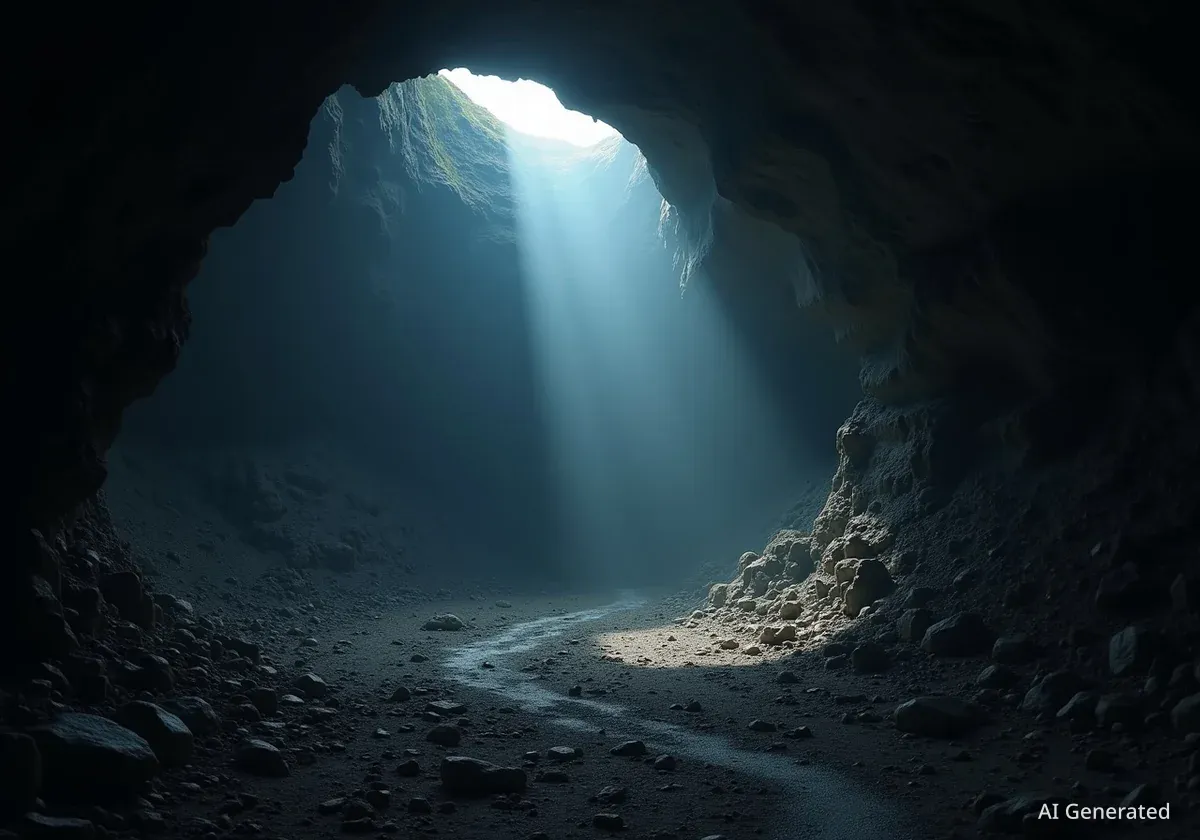The Texas Supreme Court has issued a landmark ruling that clarifies a long-standing question in property law: who owns the empty space left underground after minerals are extracted? In a decision with significant implications for landowners and energy companies, the court determined that ownership of these subsurface caverns belongs to the surface estate owner, not the holder of the mineral rights.
The case, Myers-Woodward LLC v. Underground Services Markham LLC, settles a critical dispute over property rights and sets a new precedent for how subsurface assets are valued and utilized in Texas. The ruling is expected to create new economic opportunities for surface owners and require mineral operators to rethink their long-term business strategies.
Key Takeaways
- The Texas Supreme Court ruled that surface estate owners, not mineral rights holders, own the empty caverns created by mining operations.
- Mineral lessees cannot use these empty spaces for unrelated commercial purposes, such as hydrocarbon storage, without the surface owner's permission.
- The decision reinforces that courts will strictly interpret the language of deeds, particularly regarding royalty payments specified as "in-kind."
- This ruling creates a new class of valuable assets for surface owners and introduces new legal risks for energy and storage companies.
A Dispute Over Empty Space
The legal battle originated in Matagorda County, Texas, involving a dispute between Myers-Woodward LLC, the surface landowner, and Underground Services Markham LLC (USM), which held the rights to mine salt under a deed from 1947. Between 2015 and 2019, USM extracted over 2.6 million tons of salt, creating large underground caverns in the process.
A conflict arose when USM sought to use these man-made caverns for commercial storage of hydrocarbons produced at other locations. USM argued that by creating the space, it owned it. Myers-Woodward countered, claiming that as the surface owner, it retained ownership of all aspects of the land not explicitly granted in the mineral deed, including the empty space.
From Minerals to Voids
Historically, Texas property law has focused on the ownership of valuable resources like oil, gas, and minerals extracted from the ground. The Myers-Woodward case shifts the focus to the ownership of the resulting void, a question that has become increasingly important with the growth of industries like carbon capture and energy storage, which rely on underground formations.
The case worked its way through the lower courts with conflicting outcomes. A district court initially sided with USM, granting it ownership of the caverns. However, an appellate court reversed that decision, ruling in favor of the surface owner, Myers-Woodward. Both parties then appealed to the Texas Supreme Court.
The Supreme Court's Decisive Ruling
The Texas Supreme Court provided clear answers to three fundamental questions, effectively redrawing the lines between surface and mineral estates.
Cavern Ownership Goes to the Surface Estate
The court's central holding was unambiguous: the surface estate owner retains ownership of the subsurface, including any voids left after mining. The opinion stated simply that "empty space is not salt." This means that the act of extracting minerals does not grant the mineral rights holder ownership of the resulting cavern. This decision overrules previous lower court precedents that had suggested otherwise, clarifying that post-extraction space is part of the surface estate.
A New Asset Class
With this ruling, subsurface caverns are now a distinct asset controlled by landowners. This opens up new revenue streams, as they can now lease this space for various commercial uses, including:
- Natural gas and hydrogen storage
- Compressed air energy storage
- Industrial waste disposal
- Carbon sequestration
Limits on Mineral Rights
The court also addressed whether a mineral lessee could use the property for purposes unrelated to mining. USM contended it had the right to use the caverns for commercial storage. The court rejected this argument, stating that a mineral lease grants the right to use the surface and subsurface only as is reasonably necessary for mineral extraction.
"Using that space for unrelated storage without permission from the surface owner goes beyond the scope of what Texas law allows," the court's reasoning implies.
This decision means that mineral operators cannot automatically repurpose a mined-out area for a different commercial venture. Such use would constitute trespassing unless explicitly negotiated and permitted by the surface owner.
Enforcing Royalty Agreements as Written
A third component of the ruling involved how royalties should be paid. The 1947 deed specified that Myers-Woodward was entitled to a one-eighth royalty "in kind," meaning a share of the actual salt produced. USM had been paying a cash equivalent based on market values from other contracts.
The Supreme Court reversed the lower courts on this point, holding that the "in-kind" language must be strictly enforced. The royalty owner is entitled to their share of the physical minerals or the direct proceeds from their sale, not a value calculated from different agreements. This underscores the court's commitment to a textualist interpretation of legal documents.
Implications for Landowners and Industry
The Myers-Woodward decision fundamentally alters the balance of power in subsurface land use, creating both opportunities and challenges.
For surface owners, the ruling is a significant victory. They now control a potentially valuable asset that can be leased for storage, disposal, or other infrastructure projects. This gives them new leverage in negotiations and the potential for substantial new income streams, especially in areas with favorable geology for cavern creation.
For mineral operators and energy companies, the decision introduces new complexities and risks. Companies that built business models around the assumption that they could repurpose mined caverns must now secure rights from surface owners. This will likely involve additional negotiations, lease payments, and potential legal challenges.
Legal experts advise that all parties should immediately review existing agreements. Deeds and leases that are silent on the ownership of post-extraction voids will now default in favor of the surface owner. Future agreements will need to be drafted with much greater precision, explicitly defining rights to use subsurface space both during and after mineral production.
As Texas continues to be a hub for energy innovation, including emerging sectors like hydrogen storage and carbon capture, the empty space beneath the ground has suddenly become a critical and valuable piece of real estate. This ruling ensures that the people who own the surface will have a primary say in how it is used.





